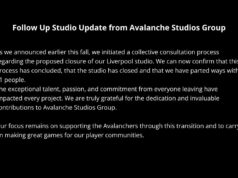The dream of Windows on mobile isn’t dead, it’s just been hibernating. Microsoft’s Xbox Full Screen Experience (XFSE), initially designed to streamline gaming on handheld PCs, has sparked a tantalizing “what if“: a streamlined, mobile-first Windows experience that could finally challenge the iOS/Android duopoly.
Since its debut, the XFSE, as Windows Central notes, has hinted at a broader potential. Could this Xbox-inspired shell become the foundation for a revitalized Windows mobile experience? The pieces, surprisingly, might be falling into place.
Microsoft’s commitment to Windows on Arm is no longer a secret. While the Copilot+ PC range may not be setting sales records, the underlying technology is quietly maturing.
Years of refinement in the Arm translation layer, coupled with advancements in Qualcomm’s Snapdragon X Elite range, have made Windows on Arm a viable alternative to traditional x86 architecture. The platform is experiencing increased adoption, with estimates suggesting Arm-based laptops could capture up to 12% of the market.
From Laptops to…Phones?
The key to unlocking Windows on mobile lies in the efficiency and versatility of Windows on Arm. The hardware hooks are already largely in place, meaning the transition from laptops to phones isn’t as far-fetched as it seems. The primary bottleneck of translation layer overheads has been addressed, thanks to native app support and improved emulation.
YouTube is awash with videos showcasing Windows 11 running on mobile devices, demonstrating the underlying feasibility of the concept. Microsoft has even committed to boosting Windows on Arm gaming support. But is it enough?
App adoption was the Achilles’ heel of Windows Phone. In 2025, however, the landscape has shifted. The rise of robust web apps means a curated ecosystem, focused on specific use cases, might be a differentiator in a market saturated with algorithmic noise and addictive junk.
Imagine a “PC in your pocket” – a device capable of running full-fledged desktop applications like Adobe Creative Cloud, alongside productivity tools like Microsoft Teams and Visual Studio Code. It’s a tempting proposition, particularly given Microsoft’s history of mobile innovation.
Microsoft was ahead of its time with Windows 10 Mobile’s Continuum, a feature that allowed users to connect their phone to a monitor, keyboard, and mouse for a PC-like experience. While Samsung DeX offers a similar functionality on Android, it lacks the power and versatility of a full Windows on Arm PC.
The Xbox Full Screen Experience provides a glimpse into this future. By transforming Windows 11 into a console-like interface, it demonstrates the potential for a device-optimized experience. This model could be replicated on a phone, with the Start Menu serving as the app launcher and the widgets panel accessible through a simple swipe.
Despite the technical feasibility, the likelihood of Microsoft re-entering the phone market remains slim. The company’s current focus on shareholder value and artificial intelligence may overshadow any ambitions for mobile innovation.
The AI landscape itself highlights this challenge. Without a strong mobile presence, Microsoft’s Copilot risks being overshadowed by Google Gemini and Samsung AI. The opportunity to leverage AI to create a truly differentiated mobile experience may be slipping away.
Could Microsoft’s cancelled Surface Phone have thrived in this environment? Perhaps, had it embraced a full Windows experience rather than a modified Android version. While the dream of Windows on mobile may remain elusive, the potential for innovation is undeniable. The question is whether Microsoft will seize it.





